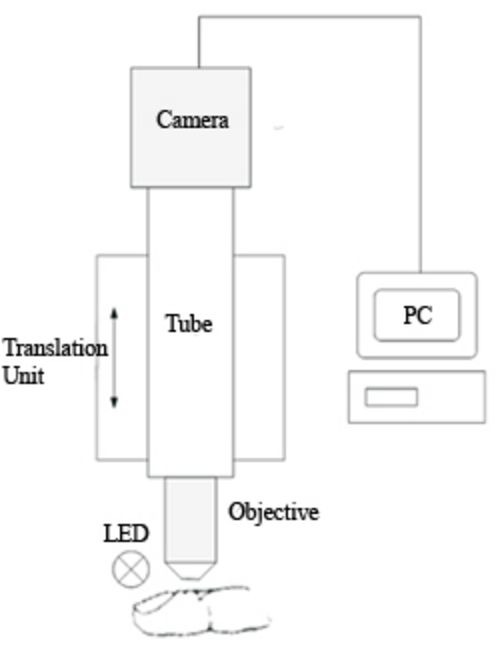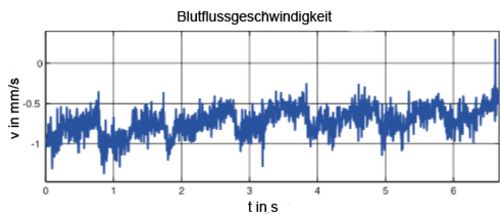In-vivo measurement of blood velocity in superficial capillaries using digital image processing
Florian Langeder
One approach to better support the healing process of body cells is to improve perfusion by increasing the blood circulation of the tissue.
Thereby the substances in the blood required for regeneration are transported faster to the affected body parts. For this medical treatment pharmaceuticals as well as medical equipments is used.
On behalf of LEOMED Medical Systems GmbH, opens an external URL in a new window a device to analyse and measure the impacts of various treatments on the blood flow characteristics of superficial capillaries should be developed. The characteristic of capillaries being parallel to the skin surface in the area of the nail fold is determined. This characteristic as well as the low flow velocity enables the direct observation of the blood cell.
The optical system (Figure 1) used, basically consists of a digital CCD-camera, a microscope lens and a focusing unit. For the analysis of the picture sequence as well as the visualisation of the results MATLAB is used and can be operated by a graphical user interface. The movement of blood cells within the capillaries is estimated by using correlative methods in spatial as well as in the frequency domain.
 Figure 1: Measurement setup
Figure 1: Measurement setup
 Figure 2: Velocity in superficial capillary
Figure 2: Velocity in superficial capillary
Finally the measurement results (Figure 2) of different capillaries without extrinsic impact are shown and compared. Furthermore the variation of temperature of the tissue is outlined as example for medical treatment. This method of treatment is compared to the previously gained results.
The circulation of the project work is restricted from December 05, 2008 for a period of 5 years.
November 24, 2008
 Go to JKU Homepage
Go to JKU Homepage


